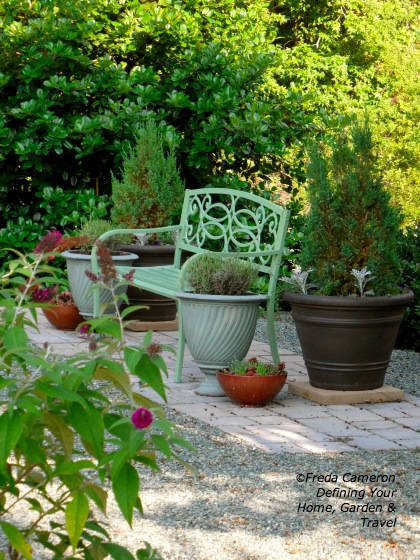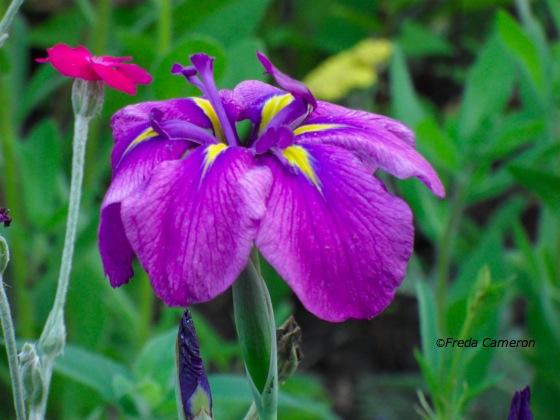 |
| First bloom of 'Little Lime' Hydrangea. June 28, 2012. |
I know! I know! I'm obsessed with refreshing lime and refreshed light green garden benches to cool down my garden!
After seven years of waiting for shade, I finally have a spot for hydrangea, my favorite summer shrub. At previous homes, I grew so many different varieties, but here in my small cottage garden, the small sliver of all-day shade requires a small shrub. In late May, while on a plant shopping trip to Big Bloomers in Sanford, I asked for 'Little Lime' and they had it in stock! Fortunately, with deep watering, it is well-established in time for this run of triple-digit heat.
'Little Lime' is not that tiny—the height and spread will be between 36-60 inches. I'm totally okay with a bit of overlap onto my path and through the fence, but since it blooms on new wood, size won't be much of an issue. With a zone rating of 3a-9b, I'm also encouraged by the hardiness since I'm in 7b. My theory is that if a plant can handle at least two zones colder and two zones hotter, then it should be a stellar performer.
In my excitement to show you this hydrangea, I took photos before the shrub is in full bloom. None of the companions are in bloom, but my color scheme is simple—use lime-to-white with blue-lavender-purple flowers.
There's an existing clematis 'Jackmanii' on the right that blooms purple in late spring.
To the left (and not shown because the plants are newly planted and not blooming), I'm using white phlox 'David', white milkweed (asclepias incarnata 'Ice Ballet') to provide flower form similar to the hydrangea. The blue mist flowers of hardy ageratum 'Wayside' were transplanted to fill in around the perennials to provide some separation between the lime and white blooms.
In front of the tall phlox and milkweed, I've added purple/blue hardy geranium 'Rozanne' because this combination, with white phlox, is a favorite in another bed in the cottage garden. 'Rozanne' mounds and scrambles as well as provides another leaf shape.
For a bit of foliage filler in front of the blues, the green/white leaves of annual 'polka dot' plant echoe the white theme.
On the outside of the fence, the row of lavender blooming crepe myrtles (probably 'Muskogee') are assisting the weeping willow to provide shade.
What's your favorite color of cool?
 |
| Blue-purple geranium 'Rozanne' scrambles up the tall, white Phlox 'David' in another location in my cottage garden. June 28, 2012. |
 |
| Hardy ageratum (shown from another garden section) is to provide filler between the white and blooms of phlox, milkweed and the lime hydrangea. |
 |
| A row of three lavender crepe myrtles outside the cottage garden provide shade for the new hydrangea (inside the fence and away from the deer). June 28, 2012 |
| Words and photos by Freda Cameron, Defining Your Home, Garden and Travel. All company or product or patented names mentioned are registered trademarks, copyrights, or patents owned by those respective companies or persons. |








































